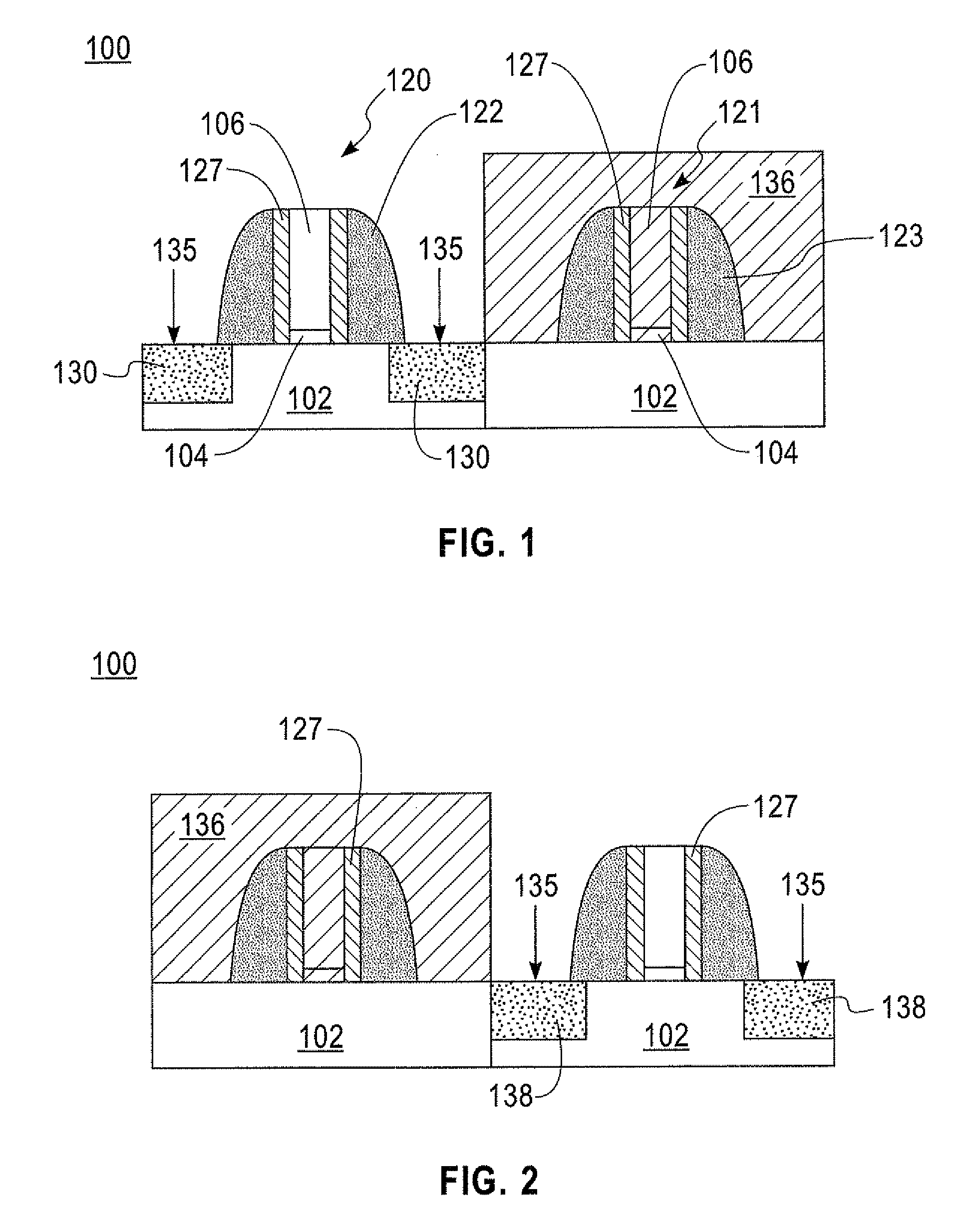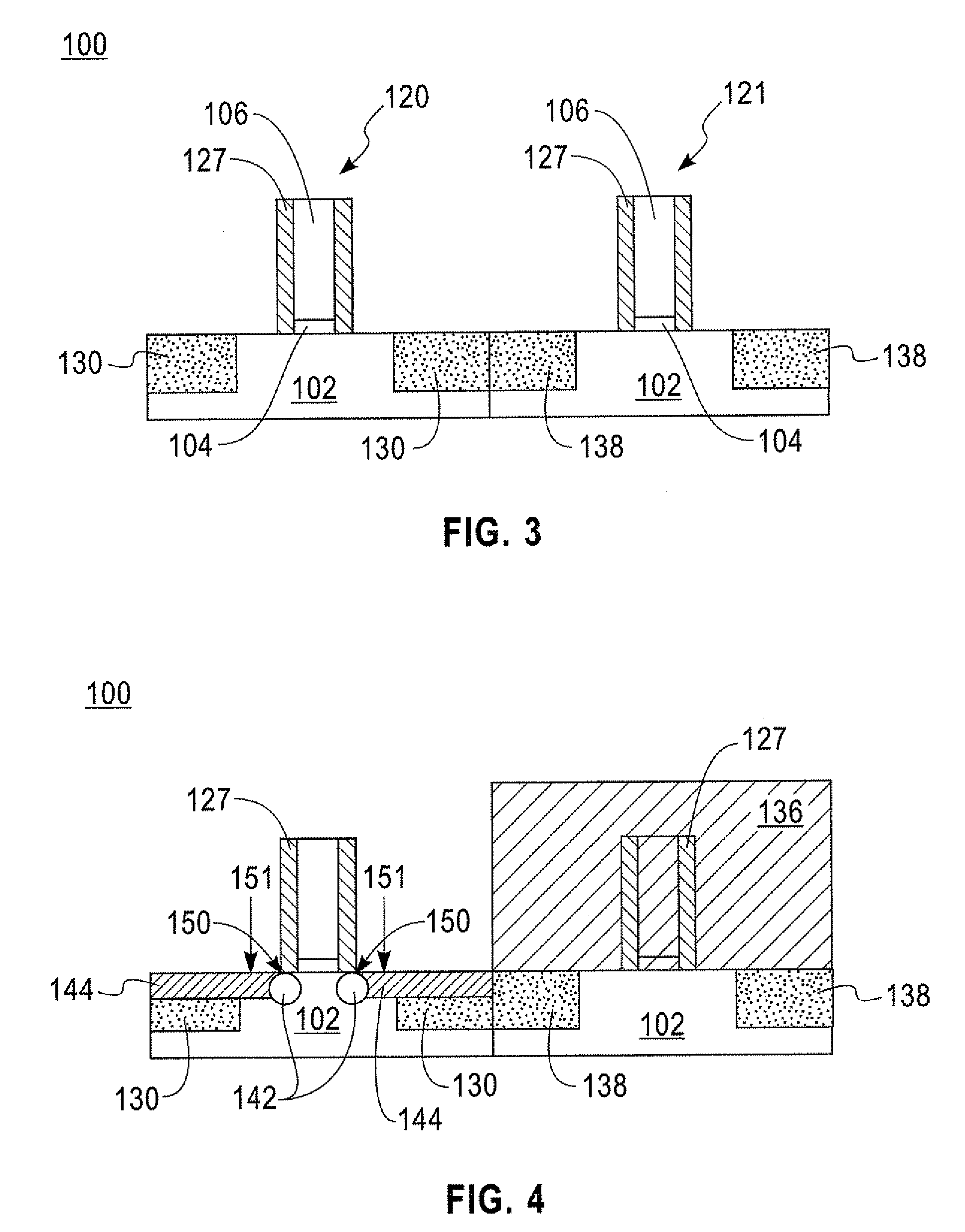Anneal sequence integration for CMOS devices
a technology of cmos and anneal sequence, which is applied in the direction of semiconductor/solid-state device manufacturing, basic electric elements, electric apparatus, etc., can solve the problems of low dopant diffusion, difficult balance maintenance, and high dopant activation with little dopant diffusion
- Summary
- Abstract
- Description
- Claims
- Application Information
AI Technical Summary
Benefits of technology
Problems solved by technology
Method used
Image
Examples
Embodiment Construction
[0056]The present invention, which provides a method for forming a CMOS device, will now be described in greater detail by referring to the drawings that accompany the present application. It is noted that the drawings of the present application are provided for illustrative purposes and are thus not drawn to scale. Moreover, like and corresponding elements shown in the drawings are referred to by like reference numerals.
[0057]Reference is first made generally to FIGS. 1-8, which are cross sectional views of a structure 100 during various stages of an embodiment of the present invention. Although the drawings show the presence of a pair of gates (i.e., a CMOS transistor structure with PFET and NFET transistors), the present invention is not limited to that number of gates. Instead, the present integration process works for any number of gates. Hence, a plurality of gates may be present across a single semiconductor structure. Furthermore, it is noted that the semiconductor structure...
PUM
 Login to View More
Login to View More Abstract
Description
Claims
Application Information
 Login to View More
Login to View More - R&D
- Intellectual Property
- Life Sciences
- Materials
- Tech Scout
- Unparalleled Data Quality
- Higher Quality Content
- 60% Fewer Hallucinations
Browse by: Latest US Patents, China's latest patents, Technical Efficacy Thesaurus, Application Domain, Technology Topic, Popular Technical Reports.
© 2025 PatSnap. All rights reserved.Legal|Privacy policy|Modern Slavery Act Transparency Statement|Sitemap|About US| Contact US: help@patsnap.com



